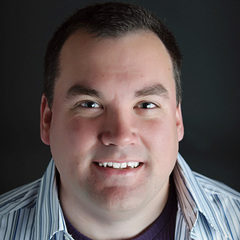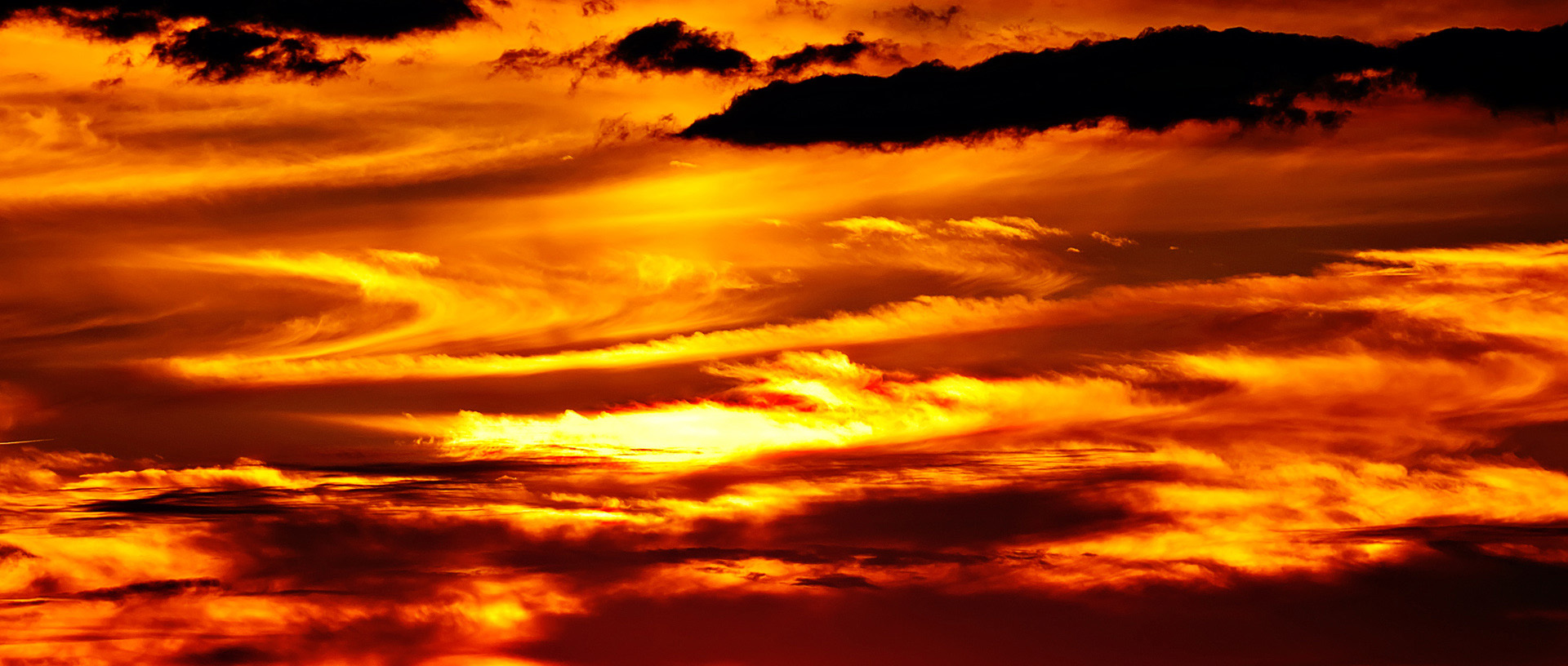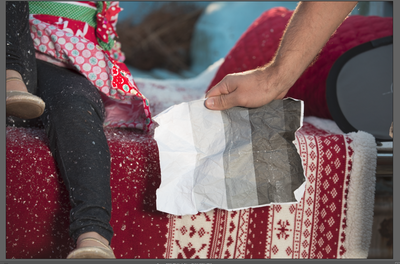-
Posts
4,093 -
Joined
-
Last visited
-
Days Won
49
Everything posted by Brian
-
I found that with my 70-200 VRII it's much sharper and more forgiving using f/4 than f/2.8. So I would use 200mm @ f/4, start there. Then try 70mm. ISO 200-400 should be fine since you have a D750. If the hall isn't bright enough, you will need some sort of external light/flash. Start with one person or one subject. Heck, a large coffee can or stand up vacuum cleaner will work in a pinch. If you do use a tripod, shut off the VR!!! Honestly, when I photograph large wedding parties, I'm usually around f5.6, give or take. (f/8 is normal and so is f/11.) I pick someone / something in the front row that is not all the way out front. Could be a black jacket next to white shirt or shoulder or something. Something in the middle and "average" looking sharp focal plane so that everything is acceptable sharp. Eyeballs are usually too small to have enough contrast swing for the AF to lock on and you get out of focus group shots. That's the biggest thing that I've learned over the years. Only when you are in close proximity, say around 5 feet away or less, e.g., the 3/4 dreamy bridal portrait, would I pick the eye closest to the lens/me. As soon as you put yourself further back, AND YOU WILL being at 200mm, a person's eyeball will be of NO USE to you in nailing focus.
-
What lenses do you currently own? Because that's where sharpness starts.
-
1024 x 768 was great in the 1990's on 15" CRT (Tube) Displays.
-
That should work. I like the ASUS "Republic of Gamers" line for photo editing purposes. Their screens are decent.
-

HDMI and VGA dual monitor setup
Brian replied to Josie Stahl's topic in The Windows & PC Hardware Forum
I'd get a different monitor. Yes, there are adapters and such, but in reality, you are wasting your time. It's one thing throwing up a power-point presentation on the fly, something completely different if you are editing photos / concerned about color quality and consistency. It will be faster and cheaper and better in the long run if you get a new display. As I've stated above, when it comes to flat screens, you really want to avoid using the 15-pin analog VGA port. -

HDMI and VGA dual monitor setup
Brian replied to Josie Stahl's topic in The Windows & PC Hardware Forum
No. It's one or the other. You'll want to replace the video card with two HDMI ports if you want dual displays. In addition, it's better to use HDMI ports for today's flat-screen displays. You'll get better colors and contrast and the image will be sharper. The standard 15-Pin VGA connector / port has been around since 1989 and is NOT meant for today's fancy flat-screens. In reality, a VGA port was only meant to go up to a 20" CRT (Tube) display. If any member comes across this comment and is using a VGA cable instead of a HDMI, DVI or DisplayPort type of cable, and has that option to upgrade...PLEASE do yourself a major favor and stop using the VGA port. I get my cables from Monoprice.com and a high quality HDMI cable shouldn't be more than $10. -
A defective lens. It needs to be sent in for repair. That problem is not normal at all. Now, there are Depth of Field challenges when shooting at f/2.8, but that isn't the case at all.
-
That's good to hear. You just need to practice with the light. It seems that this light is not a run-and-gun light. There seems to be a learning curve. I would use AWB and stop with the "Set it to _______ and fix it in post..." thinking. Just to see if you get better results. You can always go back.
-
I get my cables from Monoprice. That one from Amazon should be fine. I also refuse to pay $50+ for a special super-duper cable that the stores try to push on you. It's a HUGE profit maker for them. In fact, the box stores make more profit selling a single overpriced HDMI cable than they do selling 3 gaming consoles. It's insane. The only time you need to pay attention is if you are viewing 4K video. Then you need a HDMI 2.0 cable that is capable of 18Gbps, but you are editing photos, not watching blow-up action movies on a 60" flatscreen.
-
You are good. Enjoy your new display. Please use a HDMI cable or DisplayPort Cable with the monitor.
-
That Dell Computer seems ok, get it before Nov 30th.
-
You can add a second, much larger HD to those computers. It's easy to install and I can walk you through it. I like the WD Caviar Black internal Hard Drives. Been using them for 20+ years. Here is a 4TB model: WD 4 TB 3.5" Performance Hard Drive 128 MB Cache, 3.5" Internal Bare or OEM Drives, Black (WD4004FZWX) https://www.amazon.com/dp/B01GWS2ZOC/ref=cm_sw_r_cp_api_WIwhAbFR979T8
-
I do like the quality of light coming out of the Godox light vs your Canon Flash. It's way more even and less "Flashy." We just need to figure out how to manage the Godox.
-
You are correct in your thinking. The problem is the light itself and it's "personality" or quirks. It all boils down to knowing your gear and fiddling. Since it's so off, I would use your WB collapsible panel in addition to Damien's print out. You are going to need extra help until you figure out your groove.
-
They do, but it's a constant led light, not a flash. StudioFX Photo Video Studio Variable Color Temp 600 LED Bi Color Video Light Panel CN-600CSA https://www.amazon.com/dp/B00M4LM7GI/ref=cm_sw_r_cp_api_LswhAbG865EZF That's just one example. From my own personal experience, those led lights are meant for video and often don't have the "umph" to overpower the Sun / Ambient light.
-
It's worth a shot. Try using more of a blue gel instead of orange to compensate for your warm Godox Lights and to match the ambient light that you are shooting in.
-
@Damien Symonds -- Then you tell me what is wrong. I'm out of ideas. Seriously. What I'm seeing is the light from the Godox in her samples is a tad bit on the warm side. Just look at the white on her large WB thing, the Canon flash produces a brighter whiter light that is different than the light coming from the Godox. As far as White Balance, I was taught that you set it for your main light, in this case it's flash. You are coming at it from an editing point of view, which is fine. From what I've seen, I'm not digging her Godox lights.
-
I like the light coming from the Canon Flash. It's more neutral.
-
Ok. Then her flashes are suspect. Traditionally, Flashes are supposed to be 5500-6000K range. I've seen Godox recommend setting the WB to 5560K on some of their models. You can not physically change the WB of the flash via camera. It is what it is. I have one question, what camera body and lens are you shooting with primarily? I know Sigma lenses tend to add a bit of yellow and Tamron lenses like adding red. With your test shots of the WB cards, try different lenses too. Just to see what the values are (using Auto WB.) One more thing, let's set your camera to both Spot Metering and Matrix (Nikon) Evaluative (Canon) with the Auto WB tests. I want to see if your camera chooses different WB values in a controlled setting. Yes, I know this shouldn't do anything in terms of WB, but humor me. I'd do these tests indoors first. If the flashes are really warm, we should be able to determine that indoors. Especially if the Kelvin Values tend to go below 5500K or hang around there. Start the round of tests without any modifiers. Just camera, flash on a stand and a set of true WB cards on a table or something. Take a series of photos, 4 should be fine, at Full Power, 1/2, 1/4 and 1/8. Use a small dry-erase board with your settings and put it next to the gray cards on the table; it makes this type of test so much easier when the settings are photographed along with the cards. Write camera exposure settings, lens used and what flash power on the board. Spread the WB cards out on a small table take a series of shots with Spot Metering and then Matrix / Evaluative. Write that on the board as well. I want to see those Kelvin numbers and if they change on you. Especially when you change flash power. Oh, I'd have the flash about 4-7 feet away from the cards. Just like you shoot. In reality, the working distance of the modifier is the diameter of said modifier. So if you have a 60" modifier, that gives you up to 5 feet of working distance. Your 40" x 24" Softbox is too small for these outdoor sessions. That's why you have more contrast in some of those shots when the flash was 7' away. But I'm digressing here...
-
Before getting ahead of yourself, I think you need to fiddle. Get off of Daylight WB & Cloudy, it's messing you up. Just set it to auto WB and take a few test shots. If you have a true WB card, use it. I don't want to see any printed WB cards for these round of tests. This is just like using a calibration tool to make sure things are set correctly. We need to figure out a baseline so we can proceed forward. Sidenote: I asked a Photographer Friend who just used his Godox for the 1st time today. He used Auto WB. So let's start there. Next, I want you to set your WB to Manual and set it to as close as 5560K as you can. Then take a round of test shots. Forget trying to make people look good. Forget upcoming sessions. Just fiddle and report back.
-
All flashes are towards blue. That's why they recommend setting your camera's WB to around 5500K - 5600K, give or take, e.g. 5560k. The warmth could be coming from your Softbox; you might think the material is white, but it could be messing with things. Have you tried fiddling without using your Softbox? Speaking of which, what Softbox are you using? A good one like a Profoto or Westcott? Or a inexpensive one? Though I'm thinking it might not be the modifier, but your lights themselves. Does the cameras WB impact the color of the flash? No, not directly. The image that is produced is affected by your choice of WB. The light from the flash is impacted by the bulb itself. If you have a worn-out bulb or a crappy light to begin with, THAT will affect the flash output / light produced. Do you have a photographer friend that is local? Could you borrow a flash? Just for a few test shots, just to see. There is a difference between a $2000 Profoto and a $200-$300 light, the color temp consistency of the bulbs are WAY better with the high-end lights. Alien Bees are notorious for being all over the place, especially if you change flash power. It often takes 2-3 pops of the flash to get a Alien Bee to settle down. I'm not sure about the Godox Lights, I've never used them. I have used Alien Bees and Profotos and I can tell you first hand there is a MAJOR difference. Of course, with a price-tag to match.
-
That takes time & practice, being able to "see" the light and know which gel to use. That's the Craft of photography, it goes beyond camera settings. In addition, you can not change the white balance of the flash. The color temperature that the light produces comes from the flash bulb itself. There is no adjustment. It is what it is. You compensate the color temp by using gels. The CTO 1/4 Gel that I linked to is a good starting point. Some scenes might require more orange, others more yellow. CTO stands for Color Temperature Orange. 1/4 is how dense the color is. Think of it like a Orange Layer in PS at 25% opacity. Yes. A hand-held one. The camera's meter is completely worthless when it comes to off-camera / manual flash photography. Traditionally, hand-held meters concentrate on just exposure and flash power, never take a reading on color temp. That said, there are hand-held meters out there that will take a reading of the ambient/flash color temp, in addition to exposure readings, but they can be really expensive. Fortunately, there is a work around today...your Smartphone. There is a device called Luxi for All. This Smartphone attachment clips over the front-facing camera and you use an App to take a reading. Once such App is Cine Meter II and another one is the free one that Luxi released. Both should take a color temp reading, though it seems Cine Meter II seems to be a bit more refined interface-wise. How to use a Gel? basically it's a piece of colored plastic that clips on your flash. You can get really creative with them to produce your own look. Lots of YouTube videos. Here is one and here is another.
-
That's due to having an Atmosphere, which is a good thing. LOL!! If we could take photos in space, we wouldn't have to worry about white balance. But then you'd see the Sun's true color, which is white.
-
I found your problem. Take a look at the WB sheet: Look closely...SUNLIGHT IS COMING THROUGH THE SHEET. Which changes the rules on you. That area of the photo has skewed colors. It has nothing to do with the flash, the problem is it's a sheet of paper. I shouldn't see a finger shadow coming through the sheet. Honestly, I still would use thick gray cards or print a new sheet, that one is a bit rough and I would only print that sheet on a B&W Laser Printer. Hold whatever WB sheet in front of the subject's torso or face, blocking any light from coming through. Honestly, from my POV, this is just like using a card reader...just use WB Cards.
-
Since you are shooting outdoors, you have two different light sources with two different color temperatures. You either have to set the WB so that it favors your flash, which is usually the recommended method, OR use a CTO 1/4 Gel to get your flash to match more closely with the existing / ambient light. Most flashes produce light on the blue side, that's why the Flash WB setting tries to compensate for this and adds warmth. I took a look at the Godox WB settings and they seem to be around 5560K, which is close to a Daylight WB setting, but not 100% dead-on. Daylight WB, in terms of Kelvin Value Number, is different with each camera manufacturer; they all have different ideas on what that number should be. I took a look for a Gel Kit for your flash and found this one. While it's great you can mount a gel to the flash, the color gels that you get with the kit really aren't that great. Fortunately, you can use the gels that come with it and use them as a template and get a Lee CTO 1/4 Gel sheet. You should be able to make a couple of Gels for each of your flash.





